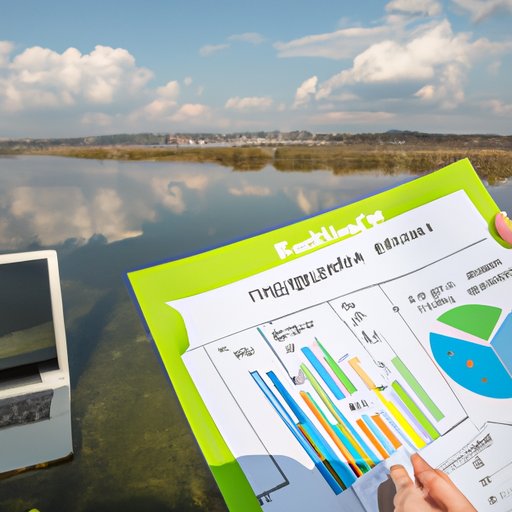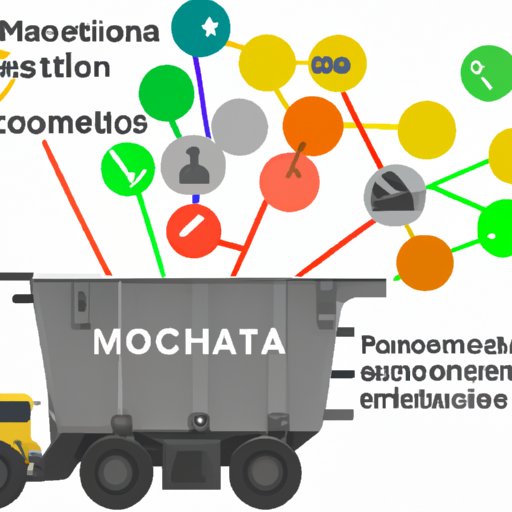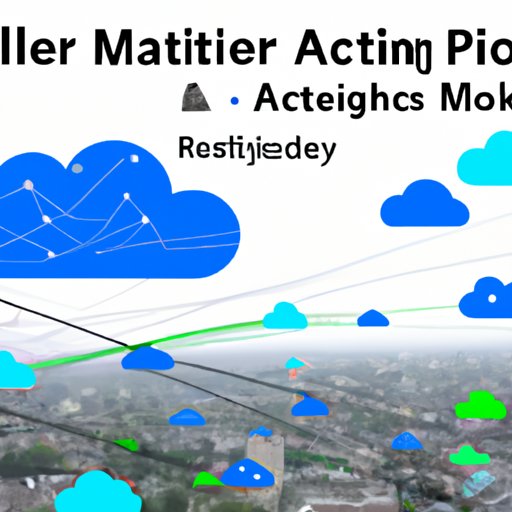Introduction
Data science is a rapidly growing field that combines various disciplines such as computer science, mathematics, statistics, and machine learning to gather, analyze, and interpret large amounts of data. As data science continues to evolve, its applications are becoming more and more varied and diverse, including its use in addressing global environmental issues. In this article, we will explore how data science can be used to help address environmental issues, from analyzing data to identify pollution sources to utilizing machine learning to automate waste management processes.

Analyzing Environmental Data to Identify Pollution Sources
In order to effectively tackle environmental issues, it is essential to first identify the sources of pollution. Data science can play a key role in this process by helping to collect and analyze data related to air and water pollution. This data can then be used to pinpoint the sources of pollution and develop strategies for reducing emissions.
What Kinds of Data Are Collected?
The types of data collected for environmental analysis can range from air and water quality measurements to satellite imagery and weather data. This data can be used to measure the concentration of pollutants in the air or water, identify sources of pollution, and monitor changes in emissions over time. Additionally, data science can be used to analyze satellite images and weather patterns to identify areas prone to higher levels of pollution.
How Is Data Used to Track Pollution Sources?
Once the data has been collected and analyzed, it can be used to pinpoint the sources of pollution. By combining information about the location and concentration of pollutants with other data such as population density, industry type, and land use, data scientists can identify the most likely sources of pollution. This information can then be used to develop strategies for reducing emissions from these sources.
Examples of Successful Applications
Data science has already been successfully used to identify sources of pollution in many areas around the world. For example, a team of researchers at the University of California San Diego used data science to create an interactive map of air pollution sources in the Los Angeles area. The map was able to accurately identify sources of air pollution and suggest ways to reduce emissions from those sources. Additionally, the European Union has used data science to create a “Pollutant Release and Transfer Register” which tracks pollution sources across the continent.
Developing Renewable Energy Sources Through Data Science
Data science can also be used to develop and optimize renewable energy sources such as solar, wind, and geothermal power. By collecting and analyzing data on factors such as sunlight intensity, wind speed, and temperature, data scientists can identify areas where renewable energy sources would be most effective and efficient.
Different Types of Renewable Energy Sources
Renewable energy sources come in many forms, including solar, wind, geothermal, hydroelectric, and biomass. Each of these sources has different characteristics that need to be taken into account when selecting an appropriate location for installation. For example, solar panels require a high level of direct sunlight to be effective, while wind turbines need to be placed in areas with high wind speeds.
Analyzing Data to Optimize Renewable Energy Production
Data science can be used to analyze data on factors such as sunlight intensity, wind speed, and temperature to identify locations where renewable energy sources would be most effective and efficient. Once the optimal locations have been identified, data science can be used to optimize the design and operation of the renewable energy sources to ensure maximum efficiency.
Examples of Successful Applications
Data science has already been successfully used to develop and optimize renewable energy sources in many parts of the world. For example, a team of researchers at Stanford University used data science to develop an algorithm that can predict the optimal placement of solar panels in any given location. Additionally, the US Department of Energy has used data science to analyze wind turbine performance in different regions of the country.

Utilizing Machine Learning to Automate Waste Management Processes
Waste management is a vital part of any effort to protect the environment. Data science can be used to automate and optimize the waste management process by using machine learning algorithms to identify and classify different types of waste more efficiently.
Overview of Machine Learning
Machine learning is a branch of artificial intelligence that enables computers to learn from data without being explicitly programmed. Machine learning algorithms can be used to analyze large amounts of data and identify patterns and trends in the data that can be used for various purposes.
How Machine Learning Can Help Manage Waste More Efficiently
Machine learning algorithms can be used to classify different types of waste more quickly and accurately than human operators. By automating the classification process, machine learning can help reduce costs and improve efficiency in the waste management process. Additionally, machine learning algorithms can be used to detect anomalies in the waste stream and alert waste management personnel to potential problems.
Examples of Successful Applications
Data science has already been successfully used to automate the waste management process in many areas. For example, a team of researchers at the University of Tokyo developed a machine learning system that can accurately classify different types of waste in real time. Additionally, the city of Amsterdam has used machine learning to develop a smart waste collection system that can detect anomalies in the waste stream and alert waste management personnel to potential problems.

Creating Predictive Models to Improve Air Quality Monitoring
Air quality monitoring is essential for maintaining good air quality and protecting public health. Data science can be used to develop predictive models that can forecast air quality in different areas and help identify sources of pollution.
Overview of Predictive Modeling
Predictive modeling is a type of data analysis that uses statistical methods to make predictions about future events or outcomes. Predictive models can be used to forecast air quality in different areas based on past data and current conditions.
How Predictive Models Can Monitor Air Quality
Predictive models can be used to forecast air quality in different areas by taking into account factors such as wind speed, humidity, and temperature. Additionally, predictive models can be used to identify sources of air pollution by analyzing data on emissions from different sources. This information can then be used to develop strategies for reducing emissions from these sources.
Examples of Successful Applications
Data science has already been successfully used to develop predictive models for air quality monitoring in many areas. For example, a team of researchers at MIT developed a predictive model that can accurately forecast air quality in cities across the United States. Additionally, the city of London has used predictive modeling to monitor air quality and identify sources of pollution.
Using Natural Language Processing to Monitor Public Opinion on Environmental Issues
Data science can also be used to monitor public opinion on environmental issues. Natural language processing (NLP) algorithms can be used to analyze large amounts of text data and identify themes and trends in public opinion.
Overview of Natural Language Processing
Natural language processing (NLP) is a branch of artificial intelligence that enables computers to understand and process natural language. NLP algorithms can be used to analyze large amounts of text data and identify themes and trends in public opinion.
How NLP Can Help Monitor Public Opinion on Environmental Issues
NLP algorithms can be used to analyze text data from social media posts, news articles, and other sources to identify themes and trends in public opinion on environmental issues. This information can then be used to inform policy decisions and develop strategies for communicating with the public about environmental issues.
Examples of Successful Applications
Data science has already been successfully used to monitor public opinion on environmental issues in many areas. For example, a team of researchers at the University of Washington used NLP to analyze millions of tweets about climate change and identify important topics of discussion. Additionally, the US Environmental Protection Agency has used NLP to analyze public comments on proposed regulations and identify areas of agreement and disagreement.
Conclusion
Data science has the potential to revolutionize the way we address environmental issues. From analyzing data to identify pollution sources to utilizing machine learning to automate waste management processes, data science can make a significant contribution to efforts to protect the environment. Additionally, data science can be used to develop predictive models to improve air quality monitoring and to monitor public opinion on environmental issues. By harnessing the power of data science, we can make great strides in addressing global environmental challenges.
(Note: Is this article not meeting your expectations? Do you have knowledge or insights to share? Unlock new opportunities and expand your reach by joining our authors team. Click Registration to join us and share your expertise with our readers.)
